
Iran’s flag carrier IranAir is set to resume flights to and from Pakistan and France after weeks of suspension imposed to curb the spread of a novel coronavirus variant into the Islamic Republic. The Civil Aviation Organization of Iran (CAOI) allowed air travel to and from Pakistan and France after dropping the two countries from the red list due to the coronavirus pandemic. CAOI Spokesman Mohammad Hassan Zibakhsh said that flights to and from Islamabad and Paris had been resumed on Tuesday after a two-month suspension, Fars reported on Sunday. “However, Iran will continue to enforce a tough ban on flights to 13 countries where the highly-infectious British variant of the coronavirus has not been fully contained,” Zibakhsh explained. The official said Pakistan and France will remain among the 26 countries which still have a high rate of infection to the virus, adding that flights to those countries will continue with restrictions.
Create: Jun 20, 2021 Edit: Jun 21, 2021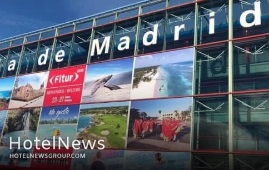
A select of Iranian travel-associated businesses and tour operators will promote handicrafts, traditions, and tourism potentials of the country at the 42nd FITUR tourism trade fair, which will be held in Madrid, Spain, from January 19 to 23, 2022. The Touring & Automobile Club of the Islamic Republic of Iran (TACI) as the representative of the Ministry of Cultural Heritage, Tourism and Handicrafts will be organizing Iran paravian at the tourism trade show, Mehr reported. A variety of exhibits, live performances, meetings, and workshops are amongst lineups of the Iranian exhibitors at FITUR 2022, which connects the industry with the inbound and outbound international markets. After hosting a post-pandemic recovery edition in the Spring of 2021, FITUR Madrid 2022 will resume its regular appointments at the beginning of the year, taking place at IFEMA – Feria de Madrid. Over the five days of the international tourism fair, professional participants will have access to unmissable commercial and business activities. In addition to being able to present their offers directly to the end customer, exhibitors can meet with over 150,000 trade visitors with significant purchasing power, according to organizers.
Create: Jun 19, 2021 Edit: Jun 19, 2021
Iranian President Hassan Rouhani has urged sustainable efforts towards developing medical tourism across the country. “Health tourism is of great importance to us, and hospitals located in the border provinces of the country can serve a pivotal role in developing medical tourism by providing medical services to foreign guests and tourists,” Rouhani said on Thursday. He made the remarks on the sidelines of the inauguration ceremony of some health projects, urging the need for reinforcing medical and health services in some provinces, including Khorasan (Razavi), Isfahan, Fars, and East Azarbaijan, is an absolute duty. “For the time being, many Iranians living in foreign countries prefer to choose homeland for their treatment or certain surgeries,” he said, adding such a trend indicates great efforts made by “dear doctors and nurses and all the dear ones who work in the health sector”. Medical tourism is booming worldwide as about 20 to 24 million people are traveling for medical treatments annually. Factors such as increased care needs over longer lifespans, rising healthcare costs, and constant pressures on some insurance industries are reasons behind why some opt to travel abroad. Regarding price competitiveness, Iran currently ranks first in the world but the country has not been very successful in attracting potential travelers as other competitors like Singapore and Turkey. People from the Persian Gulf littoral states, Iraq and Syria as well as Iranian expatriates residing in Canada and Germany constituted the majority of medical travelers to the Islamic Republic, who received plastic, cosmetics, open-heart, and orthopedic surgeries amongst other treatments over the past couple of years. The Islamic Republic has set goals to exceed its yearly medical travelers to around two million in [calendar year] 1404 (March 2025-March 2026). Amongst Iran’s trump cards are the presence of credible surgeons and physicians, cutting-edge medical technologies, high-tech medicine and diverse specializations, super affordable procedures, and finally its hospitable people.
Create: Jun 19, 2021 Edit: Jun 19, 2021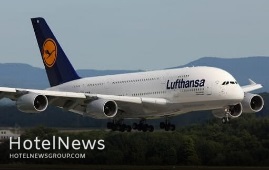
German airline Lufthansa is scheduled to resume flights from the Austrian capital, Vienna, to Tehran following months of suspension over the coronavirus outbreak. “Lufthansa will resume flights between Tehran and Vienna as of July 17,” Alireza Majzubi, an official at Tehran's Imam Khomeini International Airport announced on Friday. The airline will increase its flight schedule from three to five flights a week as well, the official added. Over the past couple of months, many countries, including the Islamic Republic, imposed travel restrictions to help curb the spread of novel coronavirus. In this line, incoming and outgoing flights have been suspended, and road travels restricted to a great extent.
Create: Jun 12, 2021 Edit: Jun 12, 2021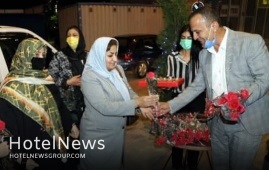
After more than a year of closure following the outbreak of coronavirus, Iran and Turkey have reopened a land border to passengers, ISNA reported on Friday. The Kapikoy-Razi border reopened on May 17 and a group of 41 female Iranian entrepreneurs and artists has recently entered the city of Van in Turkey, where the city’s hoteliers welcomed them with flowers, the report said. Tourists and vehicles are allowed through the border with negative COVID-19 PCR test results issued 72 hours in advance of entry. However, Razi-Kapikoy border from the Iranian side is still closed to tourists, and only diplomats, businessmen, and people who have a residence permit or are studying and living in Turkey are allowed to cross. As Turkey is a country through which many trips of Iranians living abroad and foreign nationals to Iran are made, the coronavirus pandemic prevented several businessmen and students from continuing their activities and even left patients who want to go abroad for further treatment helpless. Some 1.37 million Iranian tourists visited Turkey during the first eight months of 2019, accounting for 4.4% of all international arrivals in the country.
Create: Jun 12, 2021 Edit: Jun 12, 2021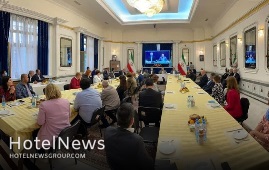
Having unique tourism capabilities, Iran is a safe and desirable travel destination for visitors from around the world, Cultural Heritage, Tourism, and Handicrafts Minister Ali-Asghar Mounesan has said. He made the remarks during a meeting with Russian and Iranian tourism activists in Moscow on Monday. In recent years, Iran’s tourism sector has flourished because new branches of traveling, such as eco-tourism, health tourism, mining tourism, and agritourism, have all been gaining popularity, the minister said. Iran offers an impressive range of tourist attractions, including historical, cultural, and natural monuments, handicrafts, dense forests, towering mountains, roaring rivers, and beautiful deserts, while there are also over 700 museums that can be visited in different cities, he explained. Tourists can find the country to be one of the pocket-friendly destinations in the world, he mentioned. He also noted that some 400 hotels and over 2,000 eco-lodge units have been established across the country. Iran’s image in the world is being tarnished by the U.S.’s anti-Iran policy, but traveling to Iran could change this image for foreign tourists, he added. Mounesan on Monday signed an action plan to implement a bilateral visa-free agreement for tourist groups. The signing of the agreement, which emphasizes a waiver of visas for tourist groups, was due to the good relations between the two countries as well as the interest of Iranians in visiting Russia and the existing capacity in the country for cultural tourists and history buffs, he noted during the signing ceremony. He also expressed hope that the signing of the joint action plan, as well as the process of increasing vaccination and overcoming the corona crisis, would result in a growth of tourism between Iran and Russia. In 2017, Iranian President Hassan Rouhani and his Russian counterpart Vladimir Putin inked a visa-free agreement for tourist groups. A joint technical committee has been developing an action plan for the previously agreed visa-free travel arrangements since then, to put the agreement into effect. Based on the 2017 agreement tour groups of 5 to 50 people heading to [easternmost parts of] Russia from Iran or vice versa are granted a visa-free stay of up to 15 days. Earlier this month, Mostafa Sarvari, who presides over the tourism marketing and advertising office of the Iranian Tour Operators Association, announced many Russian tourists are eager to travel to Iran, recounting his Russian counterparts. “Many [potential] Russian travelers are motivated to visit novel and lesser-known destinations such as Iran that could be a safe and attractive destination,” he said. “According to Russian tourism experts, the feedback from Russian tourists who have traveled to Iran has been very positive, and its reflection, especially on social media, has caused a great deal of enthusiasm and interest.” According to Ebrahim Pourfaraj, who heads the Iranian Tour Operators Association, rounds of negotiations have been held between Iranian tour operators, travel marketers, and their Russian counterparts. “We’ve been commenced talks with some Russian travel agents to put Iranian destinations on their itineraries…. And the Iranian Tour Operators Association has also entered negotiations with Russian unions for outbound tours to attract more travelers from Russia.” Pourfaraj says the majority of potential Russian travelers are unaware of the vast tourist attractions that exist in every corner of Iran. “The fact is that Iran’s political and economic relations with Russia are considered as good, but this has nothing to do with attracting tourists because it is directly connected with the Russian people. It is the Russian people who must choose Iran as their destination.” Iran is taking proactive measures in line with the long-term goal of 20 million tourists by 2025.
Create: Jun 9, 2021 Edit: Jun 9, 2021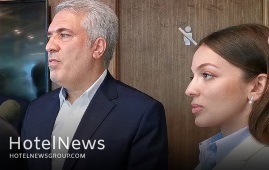
Iranian Minister of Cultural Heritage, Tourism and Handicrafts, and Head of Russian Federal Agency for Tourism emphasized tourism development between the two countries to remove possible barriers for the tourists. At a meeting on Monday, the two sides called to implementation of tourism agreements between the two countries as soon as possible and remove possible barriers to the tourists from the two countries. Mounesan said: "Facilitating the movement of tourists has been one of the important policies of Iran to calculate the income from it in GDP." Mounesan emphasized Iran moved from historical and cultural tourism to ecotourism because Iran also has eye-catching natural beauties in addition to historical and cultural attractions. The Minister said: "We launched ecotourism and rural and agriculture tourism, and the target countries were also identified. Before Corona, we had 10 million tourists from Iran, 65,000 of whom traveled to Russia. Zarina Doguzova, the head of the Russian Federal Agency for Tourism, also said that it is necessary to increase tourists to the two countries due to the warm relations between the two countries and the excellent tourism capacities. Iranian Minister of Cultural Heritage, Tourism and Handicrafts Ali Asghar Mounesan arrived in Moscow on Sunday to sign a deal on lifting individual visa requirements for tourist groups, Iran’s Ambassador to Russia Kazem Jalali wrote on his Facebook page on Sunday. "Today, Minister of Cultural Heritage, Tourism and Handicrafts Ali Asghar Mounesan is arriving in Moscow to sign an agreement on lifting visa requirements for tourist groups," the ambassador wrote. According to the diplomat, under the deal, tourists of both countries will be able to travel to Iran and Russia through accredited companies, and the entire group will receive one visa. Jalali stressed that tourism is a foundation for developing Iranian-Russian ties.
Create: Jun 8, 2021 Edit: Jun 8, 2021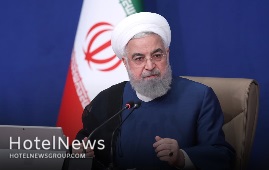
Iranian President Hassan Rouhani inaugurated several big cultural and tourism projects with 2,537 billion tomans of investment in different parts of the country Thursday. The inauguration ceremony was held through a video conference based in Tehran. The projects which are located in north and west of the country will provide employment for 2,697 people. A five star hotel in the gracious landscape of Heiran as well as renovation project of Amjad palace in Talesh both located in the northern province of Gilan are among the projects inaugurated today. 33 Renovation projects together with two major tourism centers in western province of Lorestan were also officially opened by President Rouhani today. At the ceremony, the president appreciated good efforts made to boost tourism industry. Also, he hoped that tourism would enter new conditions after public vaccination slated for final months of the Iranian calendar year which started on March 21. At his remarks, the president referred to return of 2,723 Iranian historical works and antiques from US and Europe to the country during past eight years. As he stressed, such return was kind of fulfillment of the Iranian people's rights. Every week, the president opens several important projects on petrochemicals, oil, industry, tourism, sports, infrastructure, development and health to follow goals behind "Surge in Production" which is the name of the past Iranian year (March 20, 2020- March 20, 2021) declared by the Supreme Leader.
Create: May 28, 2021 Edit: May 28, 2021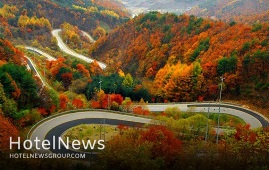
Preliminary work of collecting data about Karaj-Chalus road, its associated structures, and nearby villages has been commenced by the tourism directorate of Alborz province to have the scenic road registered on Iran’s national heritage list. Based on follow-up field visits and preliminary investigations, it was decided to develop a dossier for the national registration Karaj-Chalus road as a historical, cultural, and natural route that has considerable potential in the field of tourism, CHTN quoted the provincial tourism directorate as saying on Monday. Natural landscapes, villages with historical texture, the architecture of different periods, local food, traditional clothing, and the original Karaji dialect are among the attractions of the Karaj-Chalus axis, a provincial official said. In connection with political geography, the Karaj-Chalous road was once the most important route and connection of the southern slopes of Alborz to the northern regions of the country. As a piece of history, Chalus Road, also less well known as Road 59, was constructed during the Qajar era by the local people with very primitive hand tools. The 160 km road crossing and crawling up the Alborz Mountains offers beautiful landscapes, waterfalls, and springs. Each season presents its own special beauty along the road. The mesmerizing view changes as one travels on Chalus; from trees lining up on both sides of the pavement to getting engulfed and surrounded by the Alborz, and sometimes have dramatic views of the Karaj River, which runs along part of the road. The road between Tehran and the Caspian Sea has become a destination in itself for many Tehranis who take it just to escape the hustle and bustle of the city or for a relaxing day out with family and friends.
Create: May 26, 2021 Edit: May 26, 2021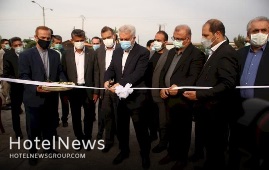
Cultural Heritage, Tourism and Handicrafts Minister Ali-Asghar Mounesan on Monday inaugurated a traditional restaurant during his visit to Sari, the capital of the northern Mazandaran province. Constructed in a piece of land covering 834 square meters in area, the traditional restaurant is expected to generate 18 job opportunities, CHTN reported. The minister was scheduled to inaugurate 78 tourism-related projects -- virtually or in-person -- during his two-day visit to the northern province, the report added. Last year, Iran joined an online campaign launched by the World Tourism Organization (UNWTO) to promote gastronomy as an essential part of tourism. Experts say that food is not merely an organic product with biochemical compositions. For members of each community, food is defined as a cultural element. The Iranian cuisine, usually embellished with fragrant herbs, varies from region to region, however, it principally accentuates freshness, deliciousness, and colorfulness. Dizi (a lamb, chickpea, and potato stew made to a centuries-old recipe), fesenjoon (chicken poached in an earthy sweet-and-sour sauce of ground walnuts and pomegranates) are amongst the most popular traditional dishes of the country. Traditional Iranian dishes are usually not overpowered with spices though kitchens are embraced with ranges of subtle and yet contrasting flavors such as a combination of sweet and sour or mild. Stretched along the Caspian Sea and Alborz mountain range, Mazandaran is a popular destination for domestic holidaymakers and it is home to more than 3500 villages and rural areas.
Create: May 26, 2021 Edit: May 26, 2021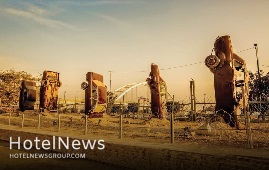
In the past, war tourism destinations were mainly the object of interest of photojournalists appearing solely on pages of crime, but now they can be traced in top travel books and websites. Whatever you call it, from war tourism, dark tourism, disaster tourism, or danger tourism, Iran has more to offer after being involved in the second-longest war of the 20th-century after the Vietnam War. Amongst many border cities directly involved in the 1980–1988 war, Khorramshahr is highly honored as a symbol of resistance during the war against Iraqi invaders. Moreover, the port city is high on the ‘will go’ index of adventure travelers interested in such niche tourism. At this time of the year, Iranians hold special ceremonies to honor the fallen soldiers and to cherish the strength and resistance of the people during “the Sacred Defense Week”, starting on Shahrivar 31 (September 21 this year) when Iraqi armed forces invaded western Iran. The third of Khordad (May 24) marks the anniversary of the liberation of Khorramshahr from Saddam Hussein’s invading army back in May 1982 when Iranians laid another foundation for sacrifice, resistance, and final victory with their blood. Iranian forces recaptured the southwestern strategic port city in a landmark operation code-named Beit ol-Moqaddas. According to Sajad Goharpak, the tourism chief of Khorramshahr, 25 spots have so far been identified in the port city which makes it a noteworthy destination when it comes to war tourism. “Khorramshahr is so great that right now we are facing a museum city because countless incidents took place in every neighborhood of the city.” For now, the country has largely been restored, and very few signs of the war, apart from street names and murals of the martyrs on some streets, can be found. These are the areas where domestic travelers usually go by tour packages are called “Rahiane Nour” (“The Path of Light”). For those interested to visit an epitome of frontlines elsewhere from the former battlefields, Tehran embraces several destinations; the Sacred Defense Museum, Tehran Peace Museum, and Behesht-e Zahra—a graveyard where many of the martyrs are buried. The epic-scale Sacred Defense Museum does bargain something different in modern Iranian history where you can delve into wreckages of rockets, tanks, rifles, vessels, mortars, radars, air defense systems, grounded jets, military supplies, and artillery pieces amongst others. The museum is equipped with a state-of-the-art visual system including projections and video walls, while audio recordings relevant to each period contribute to its charm. The recreation of the liberation of the city of Khorramshahr by the means of virtual exhibits and video projections is amongst the main features of the museum where stands a replica of the Khorramshahr mosque adorned with creamy and turquoise patterned tiles. Some tourists say they are not just interested in visiting live or former warzones out of curiosity. What motivates them is guessing the stories of people who lost their lives, being displaced, wounded, captured, or lost their loved ones in those bitter moments of the history of mankind.
Create: May 25, 2021 Edit: May 25, 2021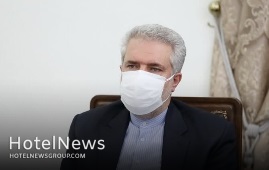
Iran has the potential to become a destination for vaccine tourism regarding considerable efforts the country is making to develop series of domestic COVID-19 vaccines, the tourism minister Ali-Asghar Mounesan has said. There is a capacity to add ‘vaccine tourism’ to the ‘health tourism basket’ of the country after all [Iranian] people are received vaccines…. and the move could fuel a boom in the tourism sector of the country.” In the near future, we will possess the capacity to provide foreigner travelers with the COVID-19 vaccine, especially those from the neighboring countries,” Mounesan said. The Islamic Republic is among the first countries which started developing a vaccine against coronavirus, and now four companies are endeavoring to release their products by September and inoculate the whole population. Out of 16 vaccine production cases, four cases have received a code of ethics and are undergoing clinical trial; it is hoped that another three to four cases will succeed in receiving license by September. According to available data compiled by the tourism ministry, the number of foreign visitors to Iran plunged 94% in the first nine months of the past Iranian calendar year (ended March 20, 2021) as the coronavirus pandemic takes a heavy toll on the tourism industry. The coronavirus epidemic has ruined more than 1.5 million jobs in Iran’s travel sector, tourism minister Ali-Asghar Mounesan said in December. “Over 1.5 million jobs have been lost in the tourism sector of Iran due to the COVID-19 disease…. Many of the tourism-insiders are now unemployed or they are staying at home,” according to Mounesan. Tourism [industry of Iran] was growing before the corona [outbreak], its revenues reached $11.7 billion in 2019, which accounted for 2.8% of GDP, near the average share of tourism in the world GDP, which was 3.2 percent, the minister explained. The ancient land embraces hundreds of historical sites such as bazaars, museums, mosques, bridges, bathhouses, madrasas, mausoleums, churches, towers, and mansions, of which 24 being inscribed on the UNESCO World Heritage list. Under the 2025 Tourism Vision Plan, the country aims to increase the number of tourist arrivals from 4.8 million in 2014 to 20 million in 2025.
Create: May 24, 2021 Edit: May 25, 2021